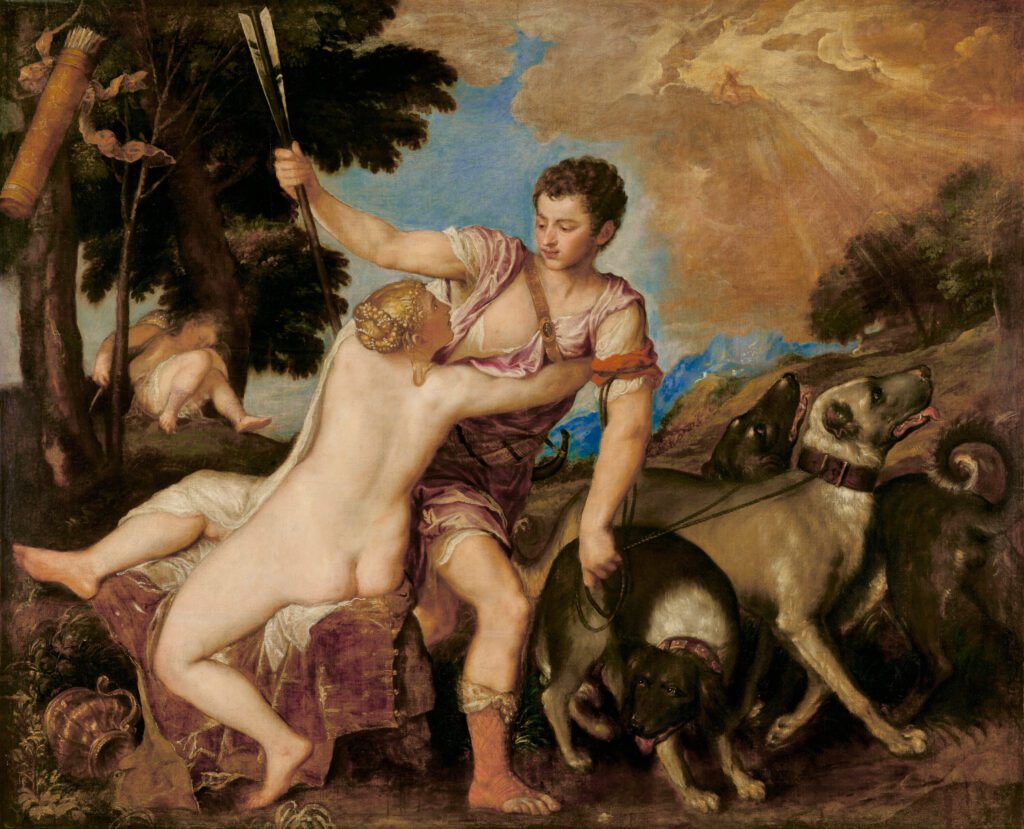
This work by Titian, created around 1555-1560, embodies the narrative and pictorial genius of the Venetian master.
We witness a moment of extreme tension: Venus, goddess of love, desperately clings to her lover Adonis who is preparing to leave for the fateful hunt. The resplendent nudity of Venus, seen from behind in a bold twist, contrasts with Adonis’ determination, dressed for hunting and firmly holding his spears. The impatient mastiffs pull on their leashes, foreshadowing the tragic fate awaiting the young man.
Titian deploys here all his technical virtuosity: Venus’ pearlescent flesh, the draperies, the twilight landscape create an atmosphere both sensual and melancholic. The detail of Cupid asleep under the tree—his arrows uselessly suspended—symbolizes the powerlessness of love against destiny. The dynamic composition, inspired by ancient reliefs, is magnified by a free and vibrant pictorial touch, characteristic of the artist’s maturity.
Further details:
- Venus and Adonis, by Titian, circa 1555-1560
- 161.9 × 198.4 cm
- The J. Paul Getty Museum, Los Angeles, North Pavilion, gallery N205
- https://www.getty.edu/art/collection/object/103RJS
Tiziano Vecellio, known as Titian (1488/1490-1576), a major figure of the Venetian School, revolutionized Renaissance painting through his incomparable mastery of color and innovative pictorial technique. Official painter of the Republic of Venice and sought-after portraitist of the great figures of his time—from Charles V to Philip II of Spain—Titian developed an exceptionally long and prolific career.
In his late period, of which this painting is a brilliant example, he adopted a freer and more expressive style, foreshadowing the Baroque sensibility. His treatment of ancient myths, such as that of Venus and Adonis which he produced in several versions, testifies to his profound humanist culture and his ability to infuse classical narratives with unparalleled emotional intensity.
